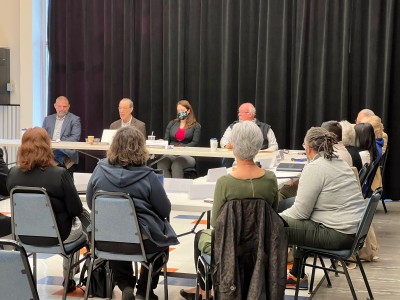This past month, the Advocacy Team traveled around Oregon to talk to students, faculty, and community members at Lane Community College, Western Oregon University, The University of Oregon, Eastern Oregon University, and Treasure Valley Community College.
Despite visiting a diverse set of institutions of higher education, ranging from smaller universities, community colleges, and large flagship universities, the themes and concerns presented to the Urban League remained the same. Individuals from urban, rural, and suburban environments alike are all expressed dismay at the retention and graduation rates of students, particularly students who identify as first-generation, low-income, BIPOC, or those within other marginalized communities.
The primary factors of Oregon’s elevated dropout rates include the lack of culturally-specific services and faculty of color, inflated cost of tuition, the absence of wraparound services like transportation assistance and mental health services, and lastly, affordable housing, which has led to some students living in their car while attending school.
However, the great irony to this problem is that we know the solution. In fact, it’s already being implemented around Oregon, albeit at a micro level, in state-wide programs like TRIO. However, like most dilemmas, funding and political will stand in stern opposition to the tantalizing solution.
TRIO is a transitional program offering support services such as academic guidance, professional development, peer mentorship, technology access, student success seminars, and more, for students unfamiliar with the hidden curriculum of the college process. The success of TRIO has been swift and profound. In the most recent calculation, TRIO students, when compared to non-TRIO students, are less likely to drop out of school (86.6% vs 50.5%), more likely to continue their education at a university after completion of community college (30.8% vs 24%), and boast higher graduation rates at both community college (50.4% vs 18.7%) and universities (70% vs 55.5%), despite often coming from the least privileged backgrounds. The causal relationship is clear, when students receive investments and support, they succeed. And when students succeed, Oregon succeeds,
However, despite this seemingly clear path to Oregon’s success, TRIO is not being properly funded and supported. Today, only 11,000 high school and college students are enrolled in TRIO despite there being over 400,000 students in high school and college in Oregon. By expanding TRIO, Oregon can improve its national standing with regard to student retention and graduation.
